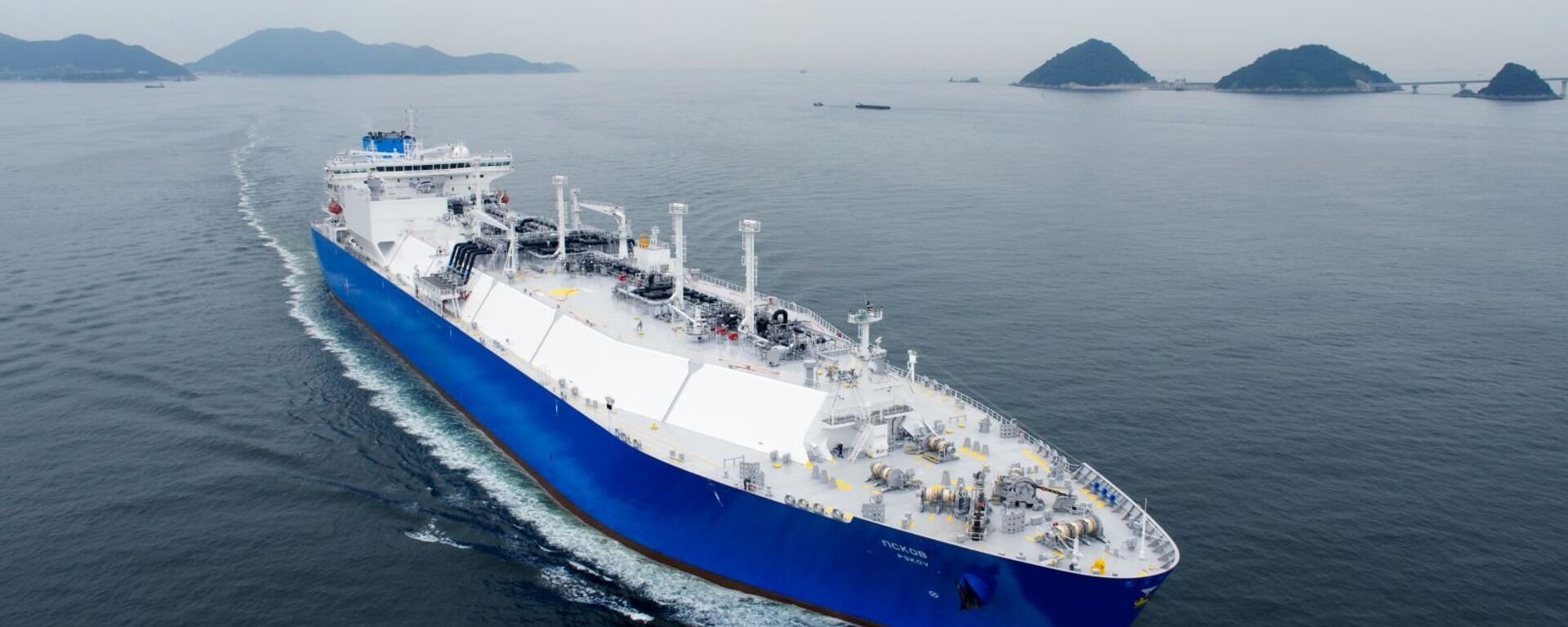https://sputnikglobe.com/20230814/drought-restrictions-hit-panama-canals-lng-tanker-traffic--1112593725.html
Drought Restrictions Hit Panama Canal's LNG Tanker Traffic
Drought Restrictions Hit Panama Canal's LNG Tanker Traffic
Sputnik International
A severe drought has resulted in maritime traffic problems at one of the busiest and most famous seafaring transport arteries in the world – the Panama Canal. 14.08.2023, Sputnik International
2023-08-14T18:58+0000
2023-08-14T18:58+0000
2023-08-14T18:58+0000
americas
panama
panama canal
maritime
traffic
restrictions
https://cdn1.img.sputnikglobe.com/img/104197/43/1041974343_0:239:5263:3199_1920x0_80_0_0_654dd381c72e77995db43e7e7a5d674a.jpg
A drought-induced drop in water levels at the Panama Canal has led to an increase in delays for ships seeking to pass, with Norton Lilly shipping company reportedly noting that LNG tankers have been forced to wait up to 18 days for the chance to navigate the waterway, compared to 8 days around July 8.The traffic issues caused by the drought have also resulted in an increase in shipping costs, with the price of transporting a 12-meter shipping container from China to the US Gulf coast via the Panama Canal rising by 36 percent to now stand at $2,400, according to the data originating from ocean freight rate benchmarking company Xeneta.Some ship owners whose vessels move goods from Asia to the US via the Panama Canal have reportedly been advised to redirect their shipments through the Suez Canal, even though this move might increase the shipping time by about a week.The drought occurred when the surface waters warming phenomenon in the Pacific Ocean known as El Nino occurred during the rainy season that lasts from May till December in Panama.As canal authorities were forced to introduce new depth restrictions for the passing vessels due to falling water levels, the daily number of vessels allowed to pass through the Panama Canal dropped from the usual 36 to 32.The Panama Canal administration has reportedly lamented that these restrictions may cost them about $200 million in lost revenues this fiscal year.
https://sputnikglobe.com/20230314/eu-imports-of-lng-pipeline-gas-up-threefold-to-over-222bln-in-2022-1108363788.html
americas
panama
panama canal
Sputnik International
feedback@sputniknews.com
+74956456601
MIA „Rossiya Segodnya“
2023
Sputnik International
feedback@sputniknews.com
+74956456601
MIA „Rossiya Segodnya“
News
en_EN
Sputnik International
feedback@sputniknews.com
+74956456601
MIA „Rossiya Segodnya“
Sputnik International
feedback@sputniknews.com
+74956456601
MIA „Rossiya Segodnya“
panama canal traffic, panama canal drought, panama canal restrictions, panama canal ship crossing
panama canal traffic, panama canal drought, panama canal restrictions, panama canal ship crossing
Drought Restrictions Hit Panama Canal's LNG Tanker Traffic
A severe drought has resulted in maritime traffic problems at one of the busiest and most famous seafaring transport arteries in the world – the Panama Canal.
A drought-induced drop in water levels at the Panama Canal has led to an increase in delays for ships seeking to pass, with Norton Lilly shipping company reportedly noting that
LNG tankers have been forced to wait up to 18 days for the chance to navigate the waterway, compared to 8 days around July 8.
The traffic issues caused by the drought have also resulted in an increase in shipping costs, with the price of transporting a 12-meter shipping container from China to the US Gulf coast via the Panama Canal rising by 36 percent to now stand at $2,400, according to the data originating from ocean freight rate benchmarking company Xeneta.
Some ship owners whose vessels move goods from Asia to the US via the Panama Canal have reportedly been advised to redirect their shipments through the Suez Canal, even though this move might increase the shipping time by about a week.
The drought occurred when the surface waters warming phenomenon in the Pacific Ocean known as El Nino occurred during the rainy season that lasts from May till December in Panama.
As canal authorities were forced to introduce new depth restrictions for the passing vessels due to falling water levels, the daily number of vessels allowed to pass through the Panama Canal dropped from the usual 36 to 32.
The Panama Canal administration has reportedly lamented that these restrictions may cost them about $200 million in lost revenues this fiscal year.



